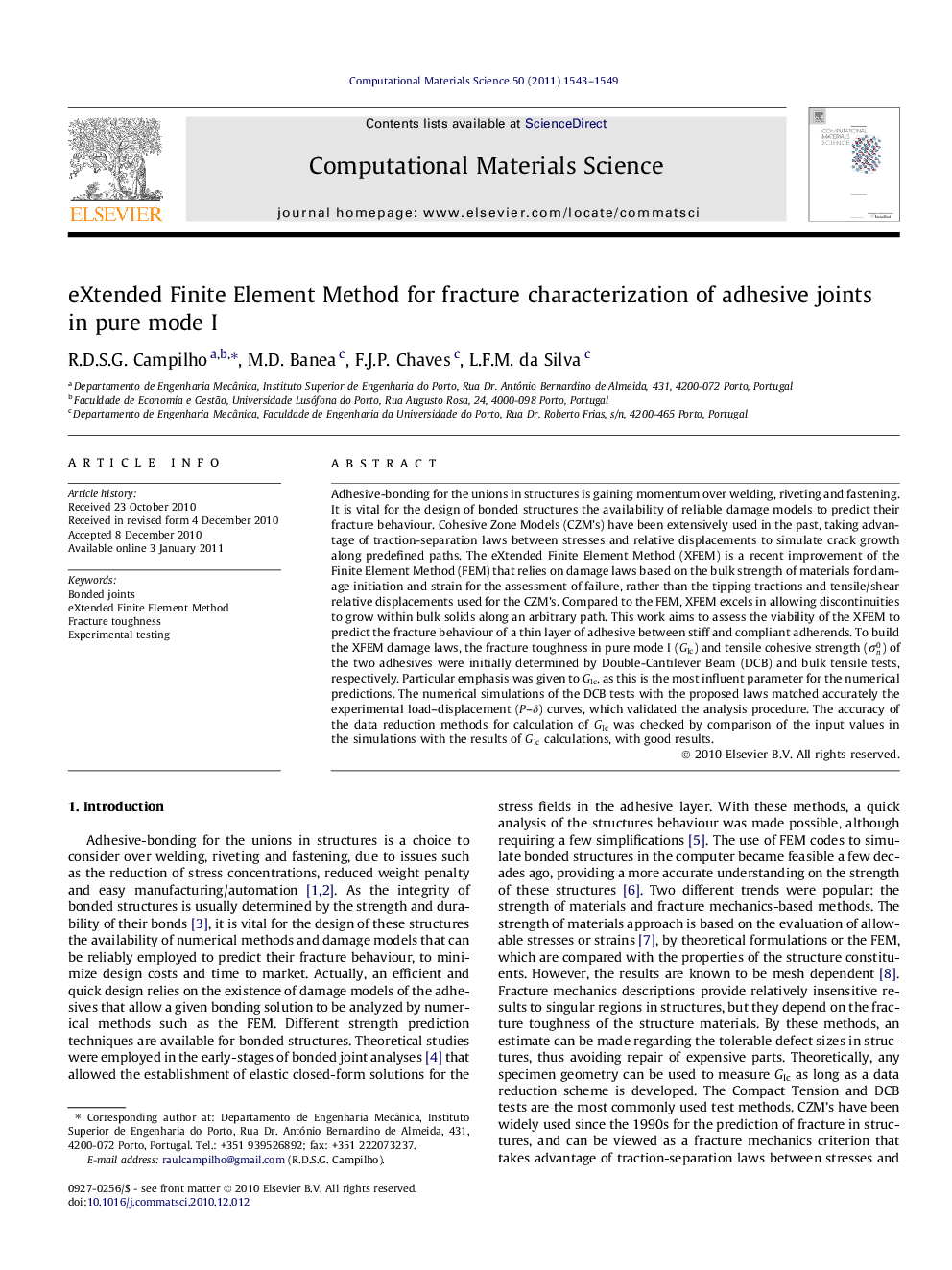| کد مقاله | کد نشریه | سال انتشار | مقاله انگلیسی | نسخه تمام متن |
|---|---|---|---|---|
| 1562175 | 999580 | 2011 | 7 صفحه PDF | دانلود رایگان |

Adhesive-bonding for the unions in structures is gaining momentum over welding, riveting and fastening. It is vital for the design of bonded structures the availability of reliable damage models to predict their fracture behaviour. Cohesive Zone Models (CZM’s) have been extensively used in the past, taking advantage of traction-separation laws between stresses and relative displacements to simulate crack growth along predefined paths. The eXtended Finite Element Method (XFEM) is a recent improvement of the Finite Element Method (FEM) that relies on damage laws based on the bulk strength of materials for damage initiation and strain for the assessment of failure, rather than the tipping tractions and tensile/shear relative displacements used for the CZM’s. Compared to the FEM, XFEM excels in allowing discontinuities to grow within bulk solids along an arbitrary path. This work aims to assess the viability of the XFEM to predict the fracture behaviour of a thin layer of adhesive between stiff and compliant adherends. To build the XFEM damage laws, the fracture toughness in pure mode I (GIc) and tensile cohesive strength ( σn0) of the two adhesives were initially determined by Double-Cantilever Beam (DCB) and bulk tensile tests, respectively. Particular emphasis was given to GIc, as this is the most influent parameter for the numerical predictions. The numerical simulations of the DCB tests with the proposed laws matched accurately the experimental load–displacement (P–δ) curves, which validated the analysis procedure. The accuracy of the data reduction methods for calculation of GIc was checked by comparison of the input values in the simulations with the results of GIc calculations, with good results.
Research highlights▸ Extended Finite Element Method to predict fracture of a thin layer of adhesive. ▸ Experimental determination of the required parameters of the XFEM law. ▸ Numerical validation of the obtained XFEM law with the DCB tests. ▸ Verification of the accuracy of the data reduction methods, with good results.
Journal: Computational Materials Science - Volume 50, Issue 4, February 2011, Pages 1543–1549